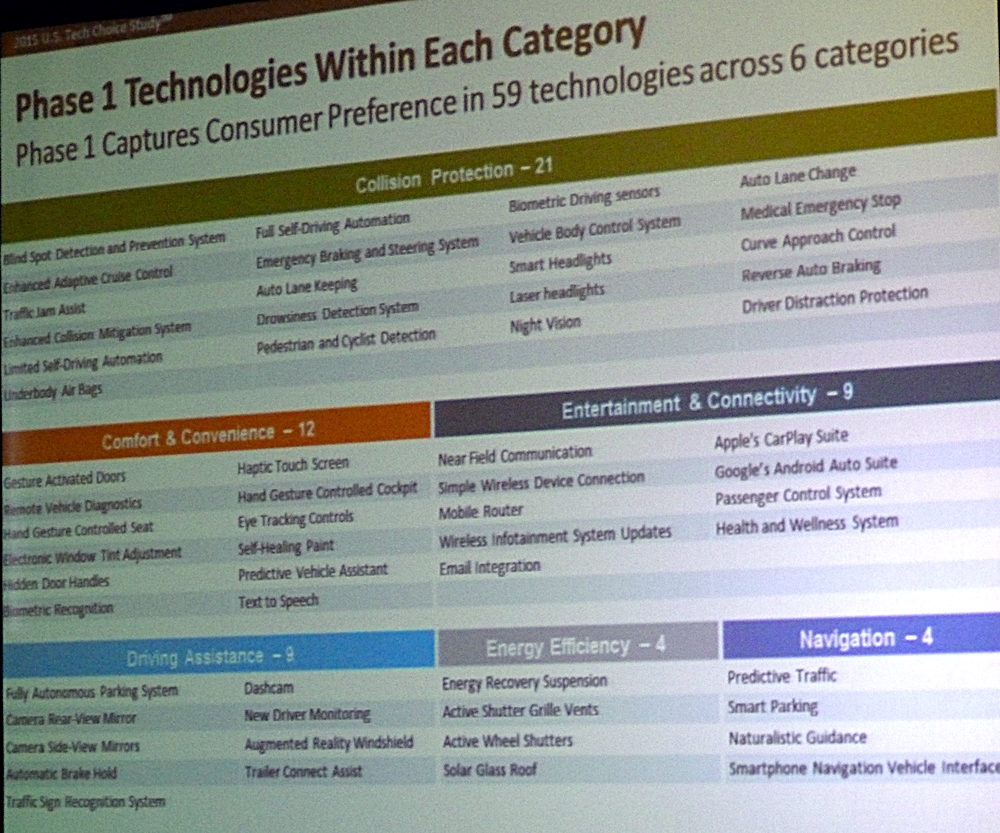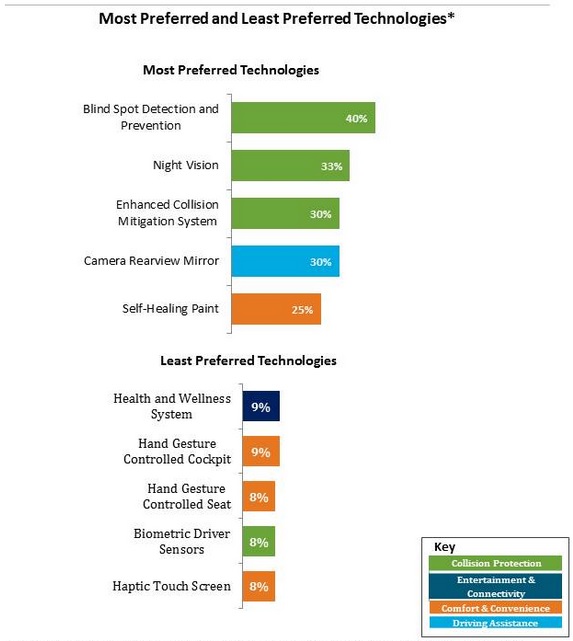A challenge I did not foresee when I first created TrueDelta’s apples-to-apples car comparison tool in 2004: the flood of high-tech, software-centric features that would emerge in the following decade. It turns out auto makers are also bewildered. Which new high-tech features will buyers demand in their next car? Which can they afford to delay or never being work on? To help, J.D. Power has conducted its first “Tech Choice” study. Results were presented today at the Detroit-based Automotive Press Association.
One thing that surprised me: J.D. Power found 59 technologies worth including in their study. Nearly five dozen features that were on few if any cars just a few years ago, but that could all be on many cars just a few years from now.
But which of these features do people really want? The trick with researching demand for new features is that people don’t often realize they want something until they’ve personally experienced it. To overcome this limitation, auto makers sometimes create simulations, so people can experience what a feature will be like before expressing how much they’d like to have it. Unfortunately, J.D. Power had to stick with a low-tech approach: text descriptions of each technology. They couldn’t construct simulations for every technology, so to keep things even across all of them they were limited to text.
With this caveat in mind, they found that car buyers are most interested in collision avoidance technologies, especially blind spot warning but quite open to features like night vision, automatic braking, and even self-driving cars. This was the case for all four generations in the study. People are concerned about the safety of self-driving cars, but if these concerns can be assuaged there will clearly be demand for the technology. Younger drivers also liked the idea of being able to work, sleep, or work off a buzz while being driven.
Respondents also highly preferred self-healing paint and camera-based rearview mirrors. The first was tried by Infiniti for a few years, but was then dropped when the self-healing abilities of the paint couldn’t meet the overly high expectations of car owners. It’s not clear why respondents found a camera-based rearview mirror was so appealing. I suspect an impressive description on the survey, that possibly included the elimination of blind spots. People hate blind spots.
The car owners surveyed expressed little interest in gesture- and haptic-based control systems, Tesla-like hidden door handles, and other unfamiliar convenience features.
A final major finding: people who have Apple phones don’t want Google’s Android Auto, and people who have Android phones don’t want Apple’s CarPlay. Both systems use the car’s infotainment screen to view and interact with phone-based apps. Not included in the study: Mirrorlink, a similar cross-platform system, or car makers’ proprietary car-based apps. All of these aim for similar capabilities. Do car owners really don’t want these, or are they unfamiliar with the possibilities, confused by the number of alternative platforms, or both?
Even if J.D. Power detected little demand for these app delivery systems, a different study by IHS Automotive found widespread global demand for in-car apps. They’re clearly happening, and are already available in many, perhaps most new cars. Who’ll win the platform battle? Probably not the manufacturers, though they provided the only platforms for the first few years. I suspect that in coming years apps will shift from car-based to phone-based, at which point the battle for supremacy will mirror that between Apple and Android phones. Car makers might be struggling now with the question of whether to support either. They’ll end up supporting both.
So, which of these features are you most interested in?


